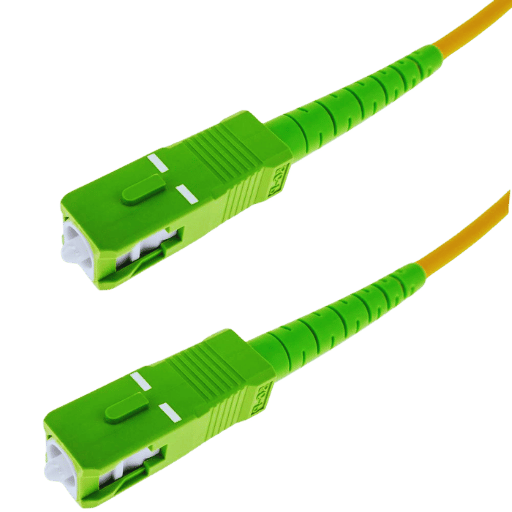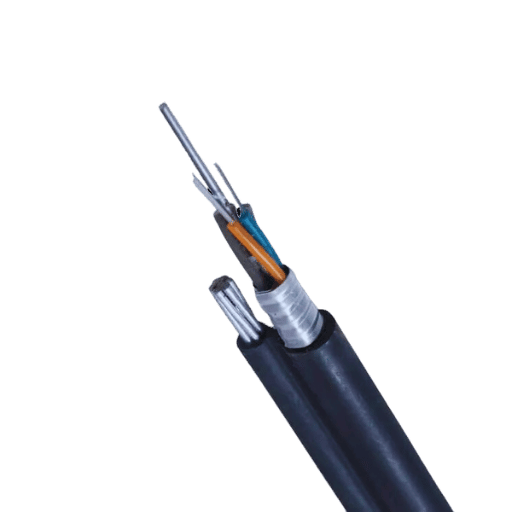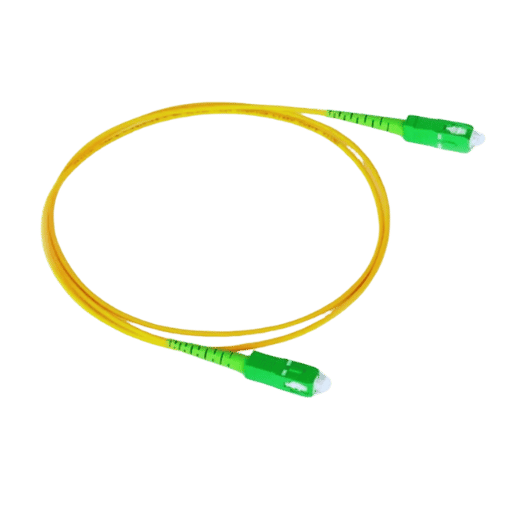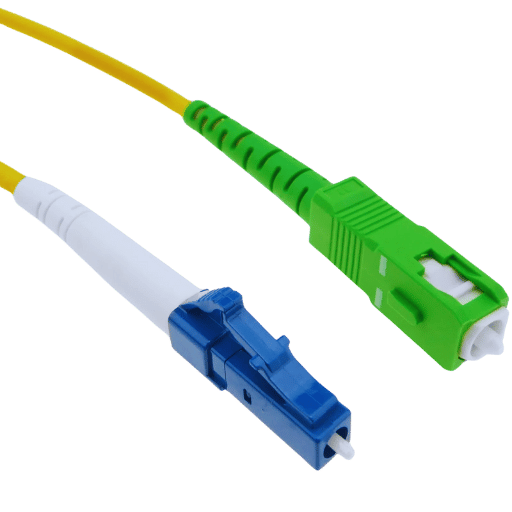During a time when quick data transfer and being connected are key concepts, there’s no doubt that fiber optic technology has become the mainstay of modern telecommunications. This ultimate handbook explores everything about fiber optic cables: their makeup, how they work, and where they are used. We will look at different kinds of fibers, how each operates, and why they are better than traditional copper cables. After reading this article, you will learn much about a revolutionized communication network by fiber optics and why it is used widely for high-speed data transfer in many industries. If you have been in the telecommunication industry for a long or are just curious about what happens behind those wires that connect us all around the world, then this manual is meant for you.

Fiber optic technology refers to the use of optical fibers, which are thin strands of glass or plastic, to transmit data as light signals. This technique works by employing total internal reflection so that many pieces of information can be sent at once over large distances with little loss. There are two categories under fiber optics: single-mode fibers, which allow for one long-distance communication path through light, and multi-mode fibers, which have multiple short-distance paths through light. Fiber optic technology has several merits, such as wider bandwidths, faster transmission rates, and better immunity against electromagnetic interference, hence making it the best option for contemporary communication systems.
The total internal reflection is the foundation of fiber optic cables. By bouncing off the core-cladding interface, injected light passes through the optical fiber. Normally made of glass or plastic, the core has a higher refractive index than its surrounding cladding so that it traps within and moves along the cable.
It is very important to construct fiber optic cables correctly because this affects how well they perform. A standard single-mode fiber usually has an approximate core diameter between 8-10 microns, which supports only one mode of light propagation. On the other side, multi-mode fibers allow several light paths by having larger core diameters, typically ranging from 50 to 62.5 microns, thereby causing more modal dispersion but enabling shorter distance transmission as well.
These days, we can achieve data transmission speeds at rates unimaginable before using fiber optics with more than 1 Gbps common and several terabits per second with advanced modulation techniques possible. This is much faster when compared to copper wires that have been traditionally employed where their maximum limit in terms of distance as well as bandwidth comes due to electromagnetic interference coupled with signal degradation. Henceforth, fiber optics offer a stronger solution for high-speed data transfer, which is necessary for telecommunication growth, internet provision services, and data center demand.
Fiber optic cables provide a number of ventajas de productos over traditional copper cables, which is why they are being used more frequently in various applications.
These benefits make fibre optics technology indispensable as building blocks for future-proof networks required by increasing demands on reliability and speed of connection to data.

These options provide choices that can be made depending on the requirements of the installation, the environmental circumstances surrounding them and performance needs.
When choosing a fiber optic cable, there are many things to consider so that it works as well as possible for the intended use. Here are some of them:
There is no one-size-fits-all answer when it comes to selecting a fiber-optic cable that will work best in every situation, but by considering these factors comprehensively, anyone can choose an appropriate solution for their specific communication requirements or environmental challenges.
Fiber optic cables are broadly used in different fields because of their unmatched transmission quality and speed. Some of the main applications are:

To maximize the performance and lifespan of fiber optic cables, it is important to have regular maintenance. This will involve carrying out frequent checks that will help in detecting physical damages if any, as well as environmental hazards like moisture entry. Cleaning fiber optic connectors must be done because they may contain contaminants which can lower signal quality greatly.
When there is a fault, troubleshooting starts by using an OTDR (Optical Time Domain Reflectometer) to find where exactly the problem is along the cable length. After this step has been taken, technicians should look at all connectors and splices to ensure they are clean enough while also making sure they have tight connections with each other. If a breakage point is discovered, then it means that part of the link might need to be spliced or replaced following necessary rules so that a minimum amount of signal loss occurs during such operation. It is also good practice to keep records about what was done during maintenance activities as well as steps followed when trying to fix faults because such information can assist in future repairs, thus improving reliability within the fiber optics network.

Light is used by fiber optic cables for transmitting data which is faster and has higher bandwidth as compared with copper cables that use electrical signals for the same. Fiber optics have reduced losses in signal strength (attenuation) and are not affected much by electromagnetic noise, meaning they can transmit data more reliably over longer distances. Also, fiber optic cables have a much larger carrying capacity than copper ones, i.e., fibers can handle many more signals at once. Although it may be cheaper and simpler to splice copper wire together; however, this does not perform as well since fiber optic technology offers better performance capabilities making them an excellent choice for high-speed networks and future-proofing infrastructure.
Multimode and singlemode fiber optic cables are used for different purposes depending on their construction and how they work. In comparison to multimode fibers, which have a broad core diameter that allows various light modes to pass through at the same time, singlemode fibers have smaller cores and only accommodate one mode of light, thus minimizing modal dispersion and enabling data transmission over longer distances such as 40 km or more. For this reason, telecommunication systems and networks with large capacities should always use single-mode optical fiber. The cable can support data transfer up to approximately 2 kilometers in range but lacks bandwidth because of modal dispersion. This makes it best suited for short-distance applications like within buildings or campuses where space may be limited, or cost is a factor, although multi-mode fiber remains cheaper than its counterpart over short hauls; however, single-mode fiber becomes necessary when higher performance levels are required over extended distances.
Fiber optic solutions have many benefits over wireless technologies, especially reliability, speed, and security. First of all, fiber optic cables ensure steadiness since they are not affected by weather or physical barriers to connection thus ensuring uninterrupted data transmission between devices. Conversely, wireless connections can be unreliable due to other equipment’s signals interference with them, atmospheric conditions or range from an access point.
Also, in terms of data transfer speeds and bandwidth capabilities fibre optics can achieve much higher levels than wireless connections which is vital for data systems (para sistemas de datos). This greater capacity allows for heavy-duty applications like streaming videos online; gaming activities as well as large file sharing hence making it the best choice for businesses and institutions that require wider channels.
Furthermore, fiber-optic networks have more inherent safety features than wireless systems. The fact that it is difficult to tap into a fiber line without being detected acts as another security measure against eavesdropping, thereby minimizing chances of data breaches. In general;, apart from boosting performance and dependability; this technology guarantees top-notch protection for sensitive information and important communications through enhanced security provided by fiber optics.

When someone says “24 fibers”, they are referring to how many optical fibers are in a single fiber optic cable. Because of this setup, it is possible to send several data channels at once, greatly boosting the general ability to transmit information and enabling faster data transfer rates. It should be noted that every cable contains twenty-four different strands, which means each one can carry its own signal; this makes them perfect for applications with heavy data transmission needs, such as telecommunication networks or data centers. Moreover, using more than one strand within a cable enhances redundancy and reliability since it ensures strong connections even if some get damaged.
ADSS (All-Dielectric Self-Supporting): This term describes a kind of fiber optic cable that can be installed overhead without metallic structures. ADSS cables instead use dielectric materials in their construction; hence, they are lighter and non-conductive, making para sistemas de telecomunicaciones. These properties make them more appropriate for areas with high electrical hazards while also making them resistant to corrosion, thereby enabling longer pole spacing without further support.
LSZH (Low Smoke Zero Halogen): LSZH cables, on the other hand, have low smoke emissions when burnt and do not contain halogens, thus safer en el caso de los sistemas de instalación. It is more critical in small spaces like tunnels or indoor spaces where fire safety is important. Less smoke generates better visibility during the evacuation, whereas no halogens mean reducing the threat of poisonous and corrosive fumes so that they become harmless right to applications conforming to strict safety guidelines.
Additional Terms: Other significant terms related to fiber optics are “single-mode” and “multi-mode” fibers which describe the type of light transmission supported by such fibers. Single-mode fibers permit only a single path for light, while multi-mode fibers enable several paths for light; therefore, they are suitable for shorter distances such as local area networks. Professionals in fiber optic cable selection, installation, and maintenance should know these definitions well.
A: Fiber optic cables are a kind of high-speed data transmission medium that use light for conveying information across long distances. They consist of thin strands of glass or plastic fibers, which serve as the conduit for light signals. This enables faster and more reliable communication than traditional copper cables.
A: Some key advantages to using fiber optic cables include higher speeds, greater bandwidths, and longer transmission distances. Additionally, they have superior resistance to electromagnetic interference (EMI) and offer more secure data transmission than copper cables.
A: There are different ways to categorize fiber optic cables based on their construction or application type; however, most commonly, they’re divided into single-mode and multi-mode types. Single-mode is employed over longer distances, while multi-mode is used for shorter-distance links, such as building connections between floors or rooms. Loose tubes and tight-buffered designs may be utilized depending on environmental requirements in order to maximize performance levels attained from these products.
A: Single mode fibers allow only one pathway for light propagation due its very small core size hence they are ideal when it comes to long haul communications where high capacity is required simultaneously. On other hand multimode fiber incorporates larger cores therefore many paths can be supported at once making them best suited toward short range applications having lower bandwidth needs comparatively.
A: Installation process involves special equipment ensuring accuracy together with minimal signal losses during setup since any little mistake made may cause significant reduction in signal quality over distance traveled by an optical waveguide system like this one; normally laid underground ducts accompanied by overhead lines too sometimes used depending on specific scenario involved.Maintenance practices carried out include regular inspections alongside tests aimed at identifying faults such as breaks or signal attenuation.
A: The biggest names in the game can be found amongst those who are considered as its top contenders. These organizations manufacture quality products and systems which can be used for different purposes with fiber optic cables as their base material or component. Among them are Corning, Prysmian Group, CommScope – all recognized for their ground-breaking innovation and trustworthy service delivery when it comes to this particular industry.
A: Communication systems get better thanks to fiber optics that have higher speed data transfer rates, larger bandwidths and reduced delays. This allows more effective and dependable communication which is needed by such systems as DER (Distributed Energy Resource) management or other high demand applications like telemedicine where real-time response matters a lot.
A: Loose tube cables contain numerous fibers within an outer protective covering or ‘tube’ that provides flexibility while safeguarding against various external threats posed by harsh weather conditions among others. They find wide use outdoors especially in long distance networks connecting cities together known as metro area networks (MANs).
A: There are many benefits offered by fiber optic cables over conventional copper ones including higher speeds at which information can travel through them; wider range coverage/distance spanned by signals carried along them; increased security provided due to immunity from electromagnetic interference among others.
A: Several aspects need to be taken into account during the selection of a fiber-optic cable, like application type, transmission distance required, environmental conditions expected to prevail on site, as well financial constraints imposed by budget allocation towards this project, etcetera. Proper understanding between single mode and multimode should also come into play depending on the specific needs of the project installation, whether it will be loose tube or tight buffered, etc.